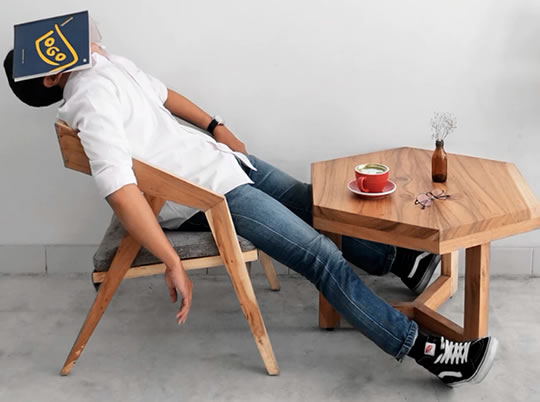What happens in the brain when you try to be active.
The human brain is hardwired for laziness.
Given the choice, the brain automatically chooses the sofa over the gym, even at the neuronal level.
The findings help explain why around 30 percent of adults and 80 percent of teenagers do not meet minimum requirements for physical activity — and society is becoming less active.
Neurologically lazy
The research involved 29 people whose electrical brain activity was measured while they made choices about whether to be active or not.
The results showed that their brains had to make more effort to avoid being lazy, than to choose activity.
Dr Boris Cheval, the study’s first author, said:
“…we observed that the electrical activity associated with two brain zones in particular, the fronto-medial cortex and the fronto-central cortex, was much higher when the participant had to choose the sedentary option.
This means the brain has to use much more resources to move away from sedentary behaviour, rather than follow its natural penchant for minimising effort.”
In other words, in terms of electrical brain activity, it is easier to choose laziness than activity.
Dr Matthieu Boisgontier, study co-author, explained:
“We knew from previous studies that people are faster at avoiding sedentary behaviours and moving toward active behaviours.
The exciting novelty of our study is that it shows this faster avoidance of physical inactivity comes at a cost — and that is an increased involvement of brain resources.
These results suggest that our brain is innately attracted to sedentary behaviours.”
An evolutionary hangover
The researchers think we have our ancient ancestors to blame for this tendency towards the horizontal:
“Making as little effort as possible was crucial for the human species during evolution.
This orientation towards saving and conserving resources increased the chances of survival and reproduction.”
Of course, things have changed a little:
“…physical activity should be encouraged instead of putting temptations in the way to do less, such as escalators or elevators.
For instance, we could modify the way public spaces are designed to reduce the opportunities for individuals to engage spontaneously in behaviour associated with minimising effort.”
Related
The study was published in the journal Neuropsychologia (Cheval et al., 2018).

